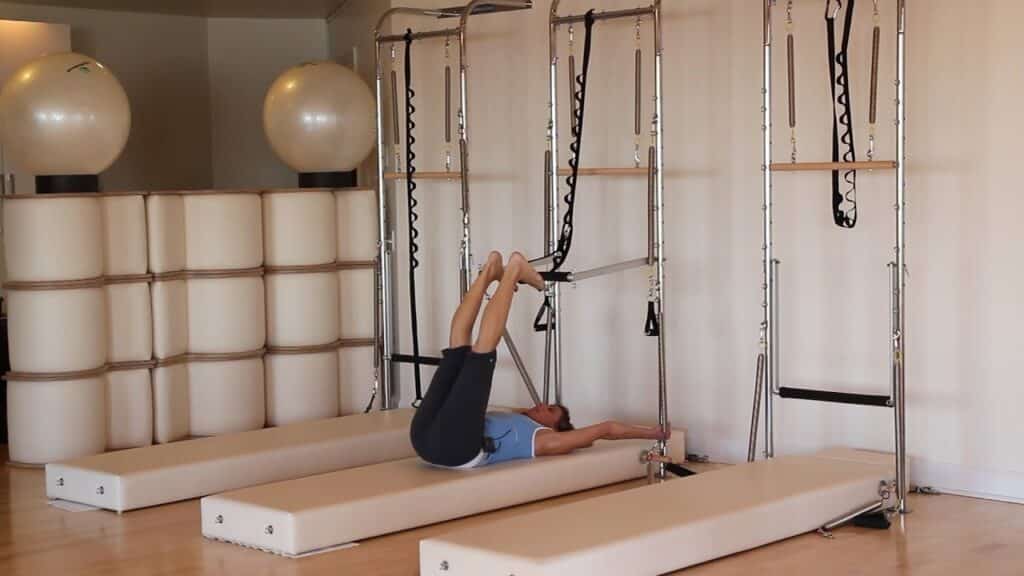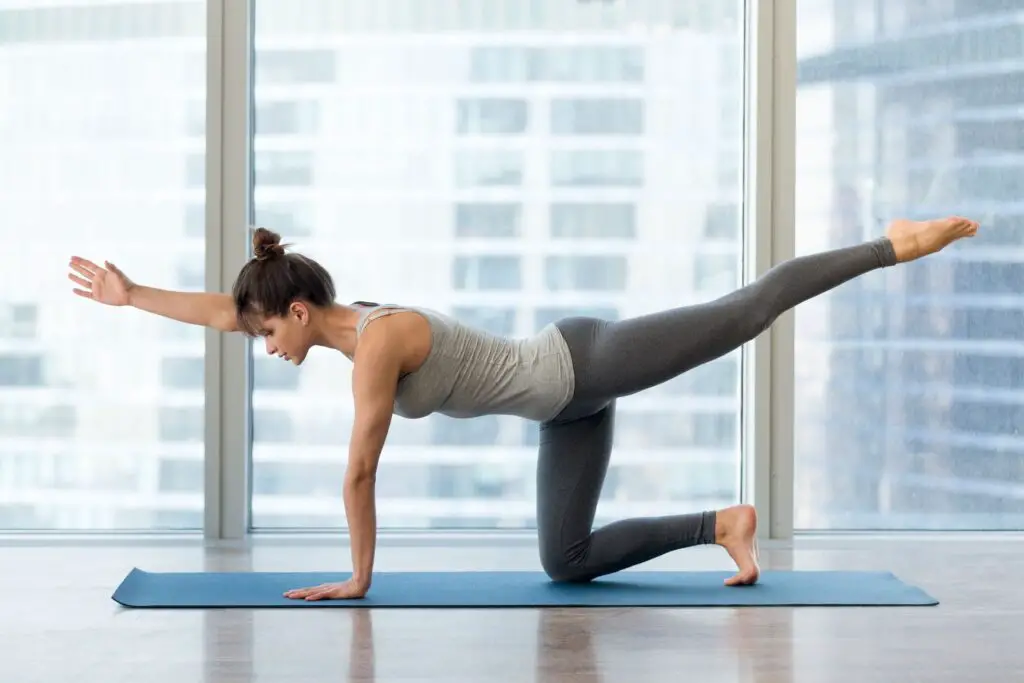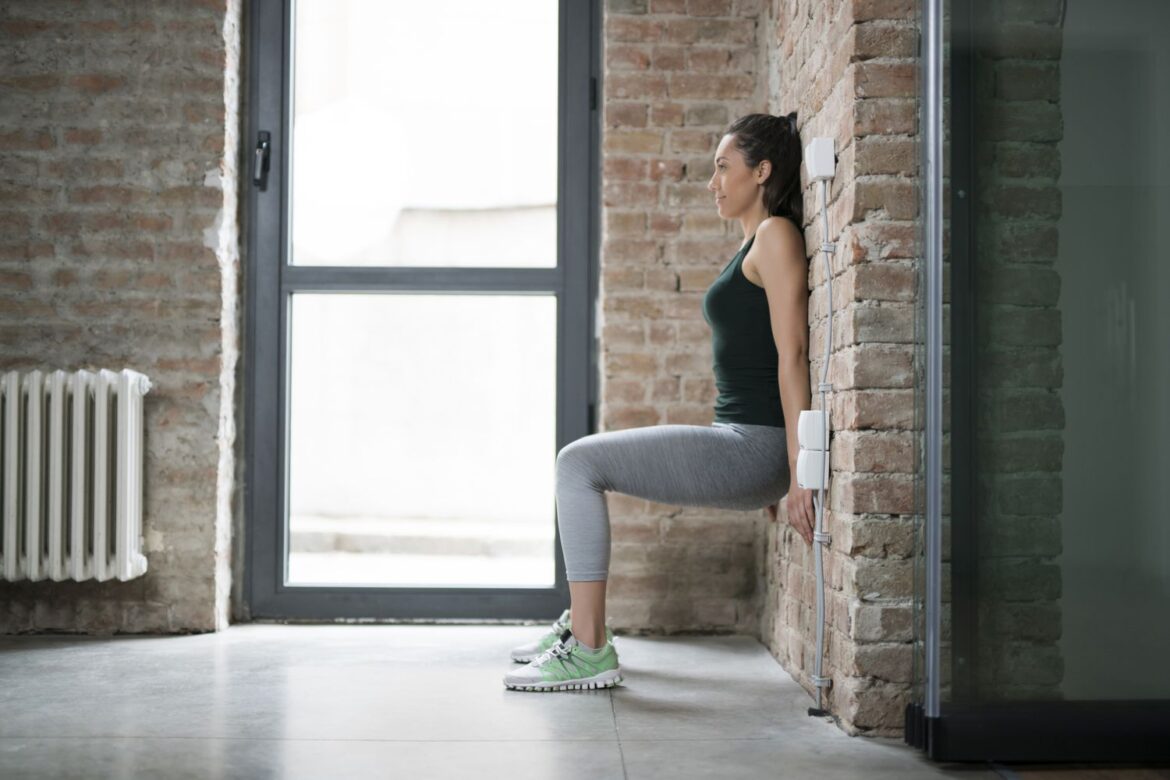Introduction
Are Wall Pilates Effective: Wall Pilates is a fitness technique that combines the core principles of classical Pilates with the support and resistance offered by a wall. In this approach, individuals perform a variety of exercises while utilizing the wall as a prop to aid in stability and enhance the effectiveness of each movement. The wall serves as a valuable tool for maintaining proper alignment and form, allowing participants to isolate specific muscle groups and engage them more effectively.
One of the key advantages of Wall Pilates is its ability to cater to individuals of varying fitness levels and physical abilities. The wall provides support for beginners who may struggle with balance and strength, making it an accessible option for those who are new to Pilates or are recovering from injuries. At the same time, it offers a challenging workout for advanced practitioners by intensifying the resistance and difficulty of certain exercises.
The effectiveness of Wall Pilates lies in its capacity to target the core muscles, improve posture, enhance flexibility, and develop overall body strength. By utilizing the wall as a reference point, participants can refine their movements and achieve a deeper connection between mind and body. This heightened awareness can lead to improved body control, balance, and coordination. Furthermore, Wall Pilates can be adapted to accommodate various fitness goals, whether it be rehabilitation, toning, or developing functional strength. It can also be incorporated into a comprehensive fitness routine alongside other forms of exercise or as a standalone practice.

Is Wall Pilates effective for weight loss?
One of the most significant benefits of Wall Pilates is that it helps tone your muscles while enhancing your flexibility. The targeted movements of Wall Pilates target the core muscles, which are essential in weight loss, and help with fat reduction, making your metabolism rate faster.
The Role of Wall Pilates in Weight Loss
Muscle Toning: Wall Pilates engages the core, legs, arms, and back muscles, leading to improved muscle tone and definition. While this may not directly result in weight loss, increased muscle mass can boost metabolism, making it easier to burn calories even at rest. The more muscle you have, the more calories your body burns, which can aid in weight management.
Calorie Burning: Wall Pilates is not a high-intensity cardiovascular exercise like running or cycling, which are known for burning a significant number of calories. However, it can still contribute to calorie expenditure. A 30-minute Wall Pilates session can burn around 150-250 calories, depending on factors like intensity and body weight.
Stress Reduction: Stress and emotional eating are common contributors to weight gain. Wall Pilates incorporates mindfulness and controlled breathing techniques that can help reduce stress levels. By managing stress, individuals may find it easier to make healthier food choices and maintain a consistent exercise routine, which is essential for weight loss.
Improved Posture and Body Awareness: Wall Pilates emphasizes proper alignment and body awareness. As individuals become more mindful of their movements and posture, they may be encouraged to make healthier lifestyle choices and maintain better overall body health, contributing to weight loss efforts.
How long does it take to see results from Wall Pilates?
between 3 to 6 months
Everybody is different, thus it’s different to predict when you’ll be able to see wall pilates results. However, it generally takes anywhere between 3 to 6 months of consistent exercise to see results.
Factors Influencing Results
Frequency and Consistency: The frequency of your Wall Pilates sessions and how consistently you practice greatly impacts the speed at which you’ll see results. Regular, consistent practice is essential for building strength and flexibility.
Individual Goals: The specific goals you set for your Wall Pilates practice will determine how quickly you notice results. For instance, if your goal is to improve flexibility, you may see results sooner than someone whose goal is to build core strength or rehabilitate an injury.
Current Fitness Level: Your starting point plays a significant role. If you’re already physically active and have a reasonable level of fitness, you may see results more quickly than someone who is just beginning their fitness journey.
Intensity and Progression: The intensity of your Wall Pilates workouts and your ability to progressively challenge yourself are crucial. As you become more skilled, you can increase the intensity of your exercises, leading to faster results.
Does Wall Pilates reduce belly fat?
Does Pilates help reduce belly fat? While you’ll certainly burn calories, losing belly fat from Pilates is a myth. You can’t spot reduce fat anywhere on your body, regardless of the exercise. Think of your stored fat like a swimming pool.
The Relationship between Pilates and Belly Fat
Strengthening the Core: Wall Pilates is renowned for its focus on core strength. It targets the muscles in the abdomen, including the transverse abdominis and obliques, which can help tone and tighten the midsection. While strengthening these muscles can improve posture and create a more toned appearance, it does not directly lead to the loss of belly fat.
Calorie Burn: Like other forms of exercise, Wall Pilates burns calories, but it may not burn as many calories as high-intensity workouts like cardio exercises. To reduce belly fat, creating a calorie deficit is crucial, meaning you need to burn more calories than you consume. While Wall Pilates contributes to this deficit, dietary choices and overall physical activity also play significant roles.
Spot Reduction Myth: It’s important to debunk the myth of spot reduction, which suggests that you can lose fat from a specific area of your body by targeting exercises. Fat loss occurs systematically throughout the body when you create a calorie deficit. While Wall Pilates can strengthen the core muscles, it won’t solely reduce fat in the belly region.
Complementary Role: Wall Pilates can be a valuable component of a comprehensive fitness routine aimed at reducing belly fat. Combining it with a balanced diet, cardiovascular exercise, and overall strength training can help create the necessary calorie deficit and support fat loss.
Does Pilates really reshape your body?
Pilates does not change your silhouette; rather, it helps us build a leaner and more sculpted body, eschewing muscle building in one area in favor of an all-over methodology. Before starting our Pilates journey, we might notice that our muscles are not very toned and that we carry some unnecessary body fat.
The Body-Shaping Benefits of Pilates
Core Strength: One of the primary objectives of Pilates is to strengthen the core muscles, including the abdominals, obliques, and lower back. As these muscles become stronger and more toned, they can help create a flatter and more defined midsection.
Improved Posture: Pilates places a strong emphasis on body alignment and awareness. Over time, this can lead to better posture. Good posture not only contributes to a taller and more confident appearance but also helps your body function optimally.
Increased Flexibility: Regular Pilates practice can improve flexibility, making your body feel more agile and lithe. Enhanced flexibility can contribute to a leaner, more graceful appearance.
Muscle Toning: Pilates targets multiple muscle groups throughout the body, promoting overall muscle tone. It can help shape and sculpt various areas, including the arms, legs, and buttocks.
Balance and Coordination: Pilates exercises often involve balancing and stability, which can improve your sense of balance and coordination. This can result in a more graceful and well-coordinated overall body movement.
Does the 28 day wall Pilates challenge work?
Your body is not going to completely transform over 28 days. Over the challenge you may build habits which will lead to a long term transformation, but over four weeks, you will not see a dramatic difference. Weight loss is completely dependent on how many calories you consume, against how many you burn.
Does It Work
Strength and Flexibility: The 28-day Wall Pilates challenge can indeed improve strength and flexibility. Wall Pilates exercises emphasize controlled movements that engage various muscle groups. Over the course of the challenge, participants are likely to notice increased muscle tone and improved flexibility.
Core Stability: Core stability is a central focus of Wall Pilates, and this challenge is no exception. Consistent practice can lead to enhanced core strength, which can benefit posture, balance, and overall body stability.
Mind-Body Connection: Wall Pilates places a strong emphasis on the mind-body connection, promoting mindfulness in movement and body awareness. This can lead to improved mental focus and a greater sense of well-being.
Holistic Approach: The inclusion of dietary guidelines and mindfulness practices can contribute to a more holistic approach to health and wellness. Participants who adhere to these recommendations may experience better overall health and well-being.
How often should I do Wall Pilates?
The wall provides stability and support, ensuring that even those new to Pilates can maintain proper form and alignment. 7. How often should I practice Wall Pilates to see noticeable results? For optimal results, it’s recommended to practice Wall Pilates 3-4 times a week.
Frequency for Beginners: If you’re new to Wall Pilates, it’s advisable to start with 2-3 sessions per week. This allows your body to adapt to the exercises and minimizes the risk of overtraining or injury. Gradually increase the frequency as you become more comfortable and experienced.
Intermediate Level: For individuals with some Pilates experience and a moderate fitness level, 3-4 Wall Pilates sessions per week can be effective. This frequency provides enough consistency to see progress without overloading your muscles and joints.
Advanced Practitioners: Advanced practitioners who are highly skilled and conditioned may engage in Wall Pilates 4-6 times per week or even daily. However, it’s essential to vary the intensity and focus of the sessions to prevent burnout and maintain balance.
Balancing with Other Exercises: If Wall Pilates is just one component of your fitness routine, the frequency may vary. For example, if you combine it with cardiovascular workouts or strength training, you might do Wall Pilates 2-3 times a week while dedicating other days to different forms of exercise.
Can you do Wall Pilates everyday?
Yes, you can do wall Pilates every day if you want to. However, it is important to listen to your body and take a break when you’re feeling tired or sore. It is also a good idea to mix up your routine by adding other types of exercise, such as cardiovascular activities or strength training.
Daily Wall Pilates: Is It Feasible
Experience Level: Whether you can do Wall Pilates every day depends on your experience and fitness level. For beginners, daily practice might lead to overuse injuries or muscle soreness. It’s recommended for beginners to start with 2-3 sessions per week and gradually increase the frequency as they become more experienced.
Variety of Exercises: To safely practice Wall Pilates every day, it’s crucial to have a diverse range of exercises in your routine. Daily repetition of the same movements can lead to muscle imbalances and overuse injuries. An experienced practitioner can create a well-rounded daily routine that targets different muscle groups and areas of the body.
Intensity and Duration: The intensity and duration of your daily Wall Pilates sessions matter. If your daily workouts are short and focus on specific areas of the body, it might be more sustainable. However, high-intensity or long-duration workouts every day can lead to fatigue and increased risk of injury.
Why am I not seeing results from Pilates?
One of the main reasons you may not be feeling or seeing the results of your Pilates workouts is your consistency, or lack thereof. While you may be getting some benefits from yo-yoing from 5 classes one week, to a two week break, you’ll find far greater results from building a solid foundation from the get go.
Inconsistent Practice
Consistency is key in any fitness program. If you’re not seeing results from Pilates, it may be because you’re not practicing regularly. Pilates requires consistent effort over time to yield significant improvements. Try to stick to a consistent schedule and make Pilates a regular part of your routine.
Insufficient Effort
Pilates exercises are designed to challenge your muscles and improve your body’s strength and flexibility. If you’re not putting in enough effort during your sessions, you may not see the desired results. Focus on proper form and engage your muscles fully during each exercise to make the most of your Pilates practice.
Improper Technique
Proper technique is essential in Pilates to target the right muscle groups and avoid injury. If you’re not seeing results, it’s possible that you’re not performing the exercises correctly. Consider working with a qualified Pilates instructor who can assess your form and provide guidance on proper technique.
Lack of Progression
Pilates offers a wide range of exercises with varying levels of difficulty. If you’re consistently doing the same exercises at the same level of intensity, your body may adapt, and progress can stall. It’s important to gradually increase the difficulty of your Pilates workouts as you become more skilled.

Conclusion
Wall Pilates emerges as an effective and versatile fitness modality that blends the foundational principles of traditional Pilates with the advantages of utilizing a wall for support and resistance. Its ability to accommodate individuals of varying fitness levels, from beginners to advanced practitioners, makes it an inclusive and accessible choice for those seeking improvements in strength, flexibility, and overall well-being.
The key benefits of Wall Pilates, such as enhanced core engagement, improved posture, better body control, and increased flexibility, underscore its effectiveness as a holistic approach to physical fitness. Whether used as a standalone practice or integrated into a broader fitness regimen, Wall Pilates has demonstrated its potential to promote a deeper mind-body connection while delivering tangible results.
As with any fitness regimen, the effectiveness of Wall Pilates is ultimately determined by an individual’s consistency, dedication, and adherence to proper technique. Nonetheless, its unique blend of support and resistance through the wall can provide a refreshing and rewarding fitness experience for those looking to embark on a journey toward improved health and fitness. So, if you’re curious about Wall Pilates, it’s worth exploring as a promising avenue for achieving your fitness goals.

